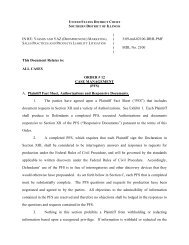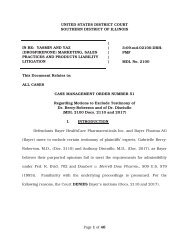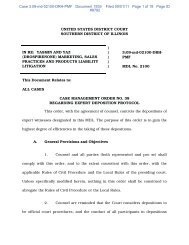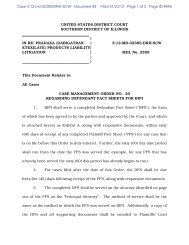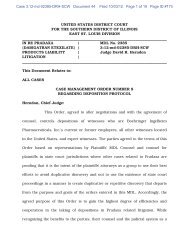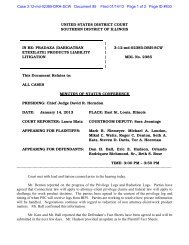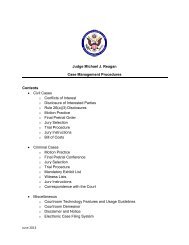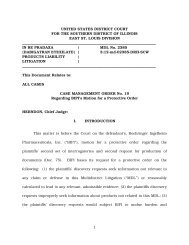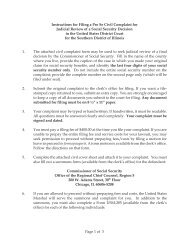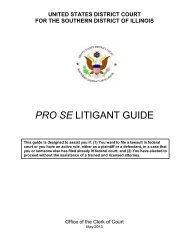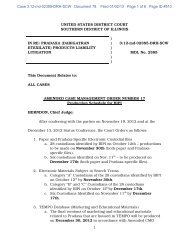Page | 1 IN THE UNITED STATES DISTRIC COURT FOR THE ...
Page | 1 IN THE UNITED STATES DISTRIC COURT FOR THE ...
Page | 1 IN THE UNITED STATES DISTRIC COURT FOR THE ...
You also want an ePaper? Increase the reach of your titles
YUMPU automatically turns print PDFs into web optimized ePapers that Google loves.
In order to stand before a court and contest a forfeiture, a claimant must<br />
meet both Article III and statutory standing requirements. To establish<br />
statutory standing in a forfeiture case, the claimant must comply with the<br />
procedural requirements set forth in Rule C(6)(a) and § 983(a)(4)(A)….<br />
The most significant requirement is that the claimant must timely file a<br />
verified statement of interest, as required by Rule C(6)(a).<br />
United States v. $487,825.00 in U.S. Currency, 484 F.3d 662, 664 (3 rd Cir. 2007).<br />
Constitutional or “Article III” standing requires an individual to have a sufficient<br />
interest in the property to contest the forfeiture. United States v. Stokes, 191 Fed.<br />
Appx. 441, 444 (7 th Cir. 2006).<br />
Under Article III of the United States Constitution,<br />
federal judicial power extends only to cases or controversies. Generally, to establish<br />
standing, plaintiffs must show (a) they suffered an injury in fact, (b) there is a causal<br />
connection between the injury and the conduct complained of, and (c) it is likely the<br />
injury will be redressed by a favorable decision. Lujan v. Defenders of Wildlife, 504<br />
U.S. 555, 560-61 (1992). See also G & S Holdings, LLC v. Continental Cas. Co., 697 F.3d<br />
534, 540 (7 th Cir. 2012)(To establish a case or controversy, the party seeking relief in<br />
federal court must demonstrate “a personal injury fairly traceable to the … allegedly<br />
unlawful conduct and likely to be redressed by the requested relief.”).<br />
Claimants in civil forfeiture actions “can satisfy this test by showing that they<br />
have ‘a colorable interest in the property,’ … which includes an ownership interest or a<br />
possessory interest.” United States v. $133,420 in U.S. Currency, 672 F.3d 629, 637-38<br />
(9 th Cir. 2012). “Article III’s standing requirement is thereby satisfied because an owner<br />
or possessor of property that has been seized necessarily suffers an injury that can be<br />
redressed at least in part by the return of the seized property.” Id., quoting United<br />
<strong>Page</strong> | 15



